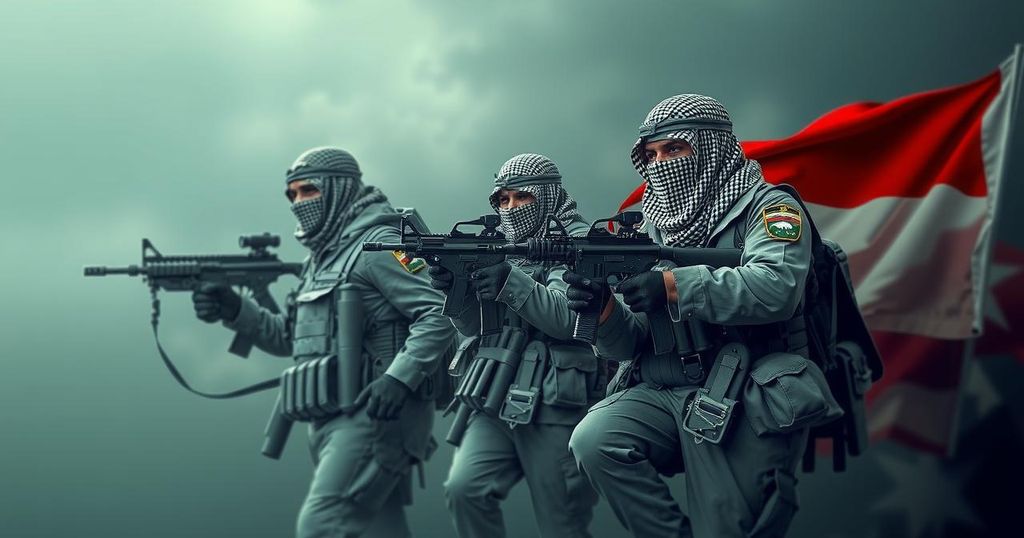U.N. Expert Analysis: The Transformation of Yemen’s Houthi Rebels into a Powerful Military Force

Yemen’s Houthi rebels, backed by Iran and other regional allies, have transitioned into a powerful military force, conducting numerous attacks in the Red Sea and Gulf of Aden since October 2023. Their actions are part of a broader geopolitical context involving the Israel-Hamas conflict, with indications of child recruitment and collaboration with al-Qaida. The Houthis’ military capabilities have vastly expanded, raising significant concerns for international security and regional stability.
According to a recent report from U.N. experts, Yemen’s Houthi rebels have undergone a significant transformation, evolving from a locally oriented armed faction with limited capabilities into a formidable military force. This shift in power dynamics has occurred with substantial support from Iran, allied Iraqi groups, and the militant organization Hezbollah from Lebanon. The report indicates that the Houthis have taken advantage of the recent Israel-Hamas conflict to reinforce their position within Iran’s endorsed “Axis of Resistance,” thereby bolstering their regional influence. The Iranian-aligned Houthis have initiated attacks on vessels in the Red Sea and the Gulf of Aden, aimed at upsetting international shipping operations amid the escalating tensions following the Hamas-triggered violence that erupted on October 7, 2023. Although the Houthis claimed to target Israeli-linked ships, investigations have shown they targeted vessels indiscriminately. Data compiled from the International Maritime Organization, along with contributions from the United States and the United Kingdom, disclosed that at least 134 attacks were conducted from Houthi-controlled territories against various merchant ships as well as U.S. and U.K. warships between November 15, 2023, and July 31, 2024. The U.N. experts observed that the Houthis’ maritime aggression has notably expanded their influence in the region, remarking that “Such a scale of attacks, using weapon systems on civilian vessels, had never occurred since the Second World War.” They also noted the Houthis employed a novel ballistic missile, termed Hatem-2, in their assaults. The panel of experts comprises five members who specialize in arms, finance, regional affairs, humanitarian law, and armed factions, hailing from several countries including India, Egypt, Switzerland, Belgium, and Cabo Verde. Intelligence received by the panel suggests that the Houthis have been coordinating efforts with al-Qaida in the Arabian Peninsula, as well as enhancing their connections to the al-Qaida-affiliated militant faction al-Shabab in Somalia. Since seizing control of Yemen’s capital, Sanaa, and significant northern territories in 2014, the Houthis have been embroiled in a civil conflict with Yemen’s internationally recognized government, which is supported by a Saudi-led coalition. The potential for peace negotiations appears bleak following the escalations of October 7, 2023. The U.N. experts characterize the conflict that commenced as an internal dispute as having escalated into a significant international crisis. The latest estimates suggest the Houthi fighting force has grown to approximately 350,000, a sharp increase from 220,000 in 2022 and a mere 30,000 in 2015. The analysis emphasizes, “the transformation of the Houthis from a localized armed group with limited capabilities to a powerful military organization,” indicating that their operational capacity now extends beyond the boundaries of their control. This transformation has been attributed to the transfer of advanced military equipment and tactical training provided by Iran’s elite Quds Force, Hezbollah, and experienced Iraqi military personnel. The U.N. experts concluded that the Houthi group lacks the comprehensive capability to develop sophisticated weaponry independently, relying heavily on external assistance. The report notes the striking parallels between military equipment employed by the Houthis and those produced by Iran and its regional allies. Evidence suggests the establishment of joint operational centers in Iraq and Lebanon, where Houthi representatives are involved in coordinating military actions with the Axis of Resistance. Meanwhile, within Yemen, the Houthis have intensified their military engagements against government forces, creating a precarious internal security situation. Moreover, the Houthis appear to be forcibly recruiting large numbers of Yemeni youth and children, even exploiting migrant communities from Ethiopia, compelling them into their military efforts and narcotics trafficking. This recruitment drive has reportedly included minors as young as ten, with parents often opposed to such involvement. Reports indicate that recruitment surged after the onset of the Gaza conflict and subsequent U.S. and U.K. airstrikes in Yemen. Yemen’s government documented 3,298 incidents of child recruitment in the first half of 2024, noting that these youths are often utilized as human shields, spies, and combatants, as well as for various support roles in warfare.
The report from U.N. experts reflects the complicated and evolving situation in Yemen, where the Houthis, initially seen as a localized insurgency, have morphed into a prominent military entity with backing from regional powers. This change has implications not only for Yemen’s civil conflict but also for broader geopolitical stability in the Middle East. The context of the ongoing Israel-Hamas war serves to illustrate the complex interconnections between regional conflicts and the rise of non-state actors such as the Houthis. The recruitment of children into warfare and the tactics employed by the Houthis highlight the severe humanitarian crisis in Yemen, which has been exacerbated by foreign interventions and the international community’s struggle to mediate a lasting resolution to the conflict.
The U.N. experts’ report underlines the profound transformation of Yemen’s Houthi rebels into a powerful military force supported by foreign alliances, notably Iran and Hezbollah. Their strategic attacks on maritime traffic signify a new level of military engagement that disrupts international shipping and heightens regional tensions. Additionally, the alarming recruitment of children and the collaboration with other extremist groups underscore the humanitarian crisis enveloping Yemen. The situation remains precarious, highlighting the urgent need for international attention and action to address both the conflict and its humanitarian ramifications.
Original Source: www.voanews.com








